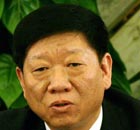Why 4 percent is controversial
Updated: 2010-11-29 09:22
By Shi Jiaqi (chinadaily.com.cn)
In a letter to the G20 financial leaders, US Treasury Secretary Timothy Geithner stunned the world with a proposal that G20 countries should "reduce external imbalances below a specified share of GDP over the next few years." Despite strong oppositions from most members, the term "indicative guidelines," a variation of "numerical target," managed to stay in the Seoul summit communiqué. Although great powers can't agree on the necessity, effectiveness and potential consequences of this new method, it is almost certain that the debate on "indicative guidelines" will dominate the summits for years to come.
Summit agenda: easily reset by sole superpower
Although South Korea was ambitious and anxious to use the Seoul summit to promote the so-called middle power vision of future global governance, the summit agenda was easily altered by its powerful military ally.
South Korea emphasized three issues while preparing for the Seoul summit. All of them are pro-development and pro-reform. The first is to establish and consolidate the world financial safety net. The second is to promote development. The third is to complete the IMF quota reform plan, homework left from the Toronto summit.
However, since the US began sending signals of a possible QE2 in August, the exchange rate issue and therefore the global imbalances, again took center stage. Because the potential ramifications of the QE2 are so huge, and almost every major economy will be adversely affected, this issue easily and quickly eclipsed the three items carefully selected by the host country.
As a result, the Seoul summit again functioned as a forum to address the needs of advanced countries. The desires and hopes of the less and least developed countries remained on the back burner.
To bring the discussion on global imbalances to a whole new level, Geithner proposed that the 20 countries should run a trade surplus or deficit within a limit agreed by all.
According to the Seoul summit communiqué, these indicative guidelines ought to be "composed of a range of indicators." Although no specific indicators are mentioned in the communiqué, Geithner's proposal about the trade imbalance target is obviously one of the potential candidates.
By incorporating the indicative guidelines in the summit communiqué, America seems to have successfully elevated the G20 from a talk shop where the members couldn't even agree on the root causes of the financial crisis to a policy powerhouse with actionable plans to transform the world. But is that true?
4 percent: evoking universal oppositions
At first glance, the 4 percent rule is fair enough. It sets limits for both the surplus and the deficit countries at the same time. However, in real life, the proposition is highly controversial.
Understandably, countries running large external surpluses do not like it at all. German officials ridiculed the proposal as an old-style central planning policy, and argued that Germany's trade surplus reflected its global competitiveness. Japanese officials, too, were suspicious of the plan, emphasizing that each country had "its own circumstances." According to IMF's projections, these two countries' current account surplus will register 6.1% and 3.1% respectively this year.
Russia also expressed its doubts about the plan, citing demographic structure and its high share of natural resources exports as justifiable and acceptable causes for large external imbalances. According to the IMF, its current account deficit will amount to 5.1% of the GDP.
India objected to the idea too, albeit for a different reason. India's current account deficit will increase from 2.9% in the last fiscal year to 3.6% this year as projected by the Barclays estimates. The Indian prime minister said, "It is not easy to reach agreement on what are sustainable current account balances for individual countries given the structural differences across countries, the many uncertainties that prevail, and the multiple goals that each country has to balance."
Given the above objections, it is a miracle that the "indicative guidelines" was able to navigate its way into the final text of the communiqué. Of course, this was made possible only after two compromises were made. First, the term "numerical target" was replaced by a more obscure and less binding phrase of "indicative guidelines." Second, the communiqué emphasizes the "need to take into account national or regional circumstances, including large commodity producers."
Paper's Digest

Chinese jet takes on Big 2
First large commercial plane set to ride on demand for aircraft as economy grows.
Super-CPU only for domestic eyes
Specials

Gaining ground
Doing business in china for westerners has come a long way, Peter batey says.

Safeguarding environment a priority
China continues to face mounting pressure to curb environmental degradation, despite progress in reducing pollution over the last five years, the environmental protection minister warned.

Employment to remain a continuing challenge
China's top labor official said the country will face a tough employment situation in the next five years.
